Welcome to Purple Pawn, covering games played around the world by billions of people every day.
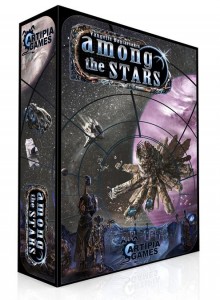 When Artipia Games contacted me recently to offer a print-and-play copy of the company’s Indiegogo project, Among the Stars, I was hooked on the concept of a tile-laying game about building space stations. The other major mechanic in the game, drafting, is not one that I’m a fan of but also wasn’t going to stop me from trying it out.
When Artipia Games contacted me recently to offer a print-and-play copy of the company’s Indiegogo project, Among the Stars, I was hooked on the concept of a tile-laying game about building space stations. The other major mechanic in the game, drafting, is not one that I’m a fan of but also wasn’t going to stop me from trying it out.
The artwork, too, was a big draw. Artist Odysseas Stamoglou has done a fantastic job of invoking an epic and futuristic feel.
According to the game’s designer, Vengelis Bagiartakis, the idea of pairing drafting and tile-laying is one he’d been experimenting with for a while. Eventually he decided the combination would work well in a more substantial strategy game and decided to apply his love of science fiction in coming up with a theme.
Game Play
Here’s basically how the game works. Among the Stars is played over four rounds. At the start of a round, each player receives 10 credits (currency) and 6 location cards. The location cards represent station modules like crew quarters, command centers, fighter launch bays, cargo holds, laboratories, and communications beacons. Each turn, a player selects one of the location cards from his hand and passes the remaining cards to the left or right. (With six cards dealt to each player at the start of the round, that means there are six turns in a round.) All players reveal their selected cards simultaneously and then choose from three actions. A player can either build his chosen location by paying its cost in credits and adding it to the play area in front of him (his station), trade the location in for three credits, or turn the location in, pay an additional credit, and receive a power reactor (with two energy cubes). Building a location card means placing it orthogonally adjacent to an existing location already part of the station (a main power reactor is the starting piece for each player’s station).
When built onto a station, a location card confers upon its player a set number of victory points specified on the card. Additionally, many cards also provide a variable number of victory points based on certain conditions. For example, the pilot training area is worth two victory points, plus one if placed adjacent to another military location (red cards) or plus two if placed adjacent to a fighter launch bay. Some of these bonus points (those highlighted in yellow), aren’t calculated until the end of the game. An example of this is a life support system card, which when placed is worth zero points, but at the end of the game is plus one point for every three locations in the entire station.
The reason for the power reactor cards is that some locations, in addition to their credit cost, also require a certain number of energy cubes. These energy cubes must come from an existing power reactor within two spaces.
At the end of the game, additional victory points can be earned for meeting certain objectives—like having built the most recreation locations (purple cards) for 5 points or having the most credits for 3 points. Also, at the beginning, each player is given a special ability, which may for example allow a player to trade cards with others or collect four credits for a trade-in instead of three.
What I Think
After playing Among the Stars, I have to say my feelings about it are mixed. Overall, it felt to me like a game that would benefit from further development and refinement. For example, building reactor cards to maintain a supply of energy didn’t seem to be very important or have much affect on the game. As another example, one of the special abilities in the game allows the possessing player to draw 11 location cards at the beginning of the round, instead of 6 (after which they still pass just 5). This may be balanced with the other special abilities in terms of power, but it takes that player a lot longer to play his first turn. Some of the text on the cards is quite small. And I wish the location cards were actually going to be cardboard tiles.
Unfortunately, I’ve only had a chance to play the game once before writing this article—with only 5 days left on the Indiegogo project I didn’t want to wait any longer—so you may take this opinion with a grain of salt. Also, I think that the drafting mechanic probably works better with players who’ve developed a familiarity with a game after repeated plays. Eventually, players will learn what cards to expect will come up in the game, as well as to recognize what their opponents are trying to accomplish and make card choices to foil those plans.
Still, I enjoyed playing the game and would gladly try it again. I think the combination of drafting and tile-laying works very well and is a good fit for the theme. The game presents some interesting decisions with regard to specializing versus diversifying, how to configure one’s locations, when to choose a card and when to pass it, and whether to build a location or trade it in for credits. Also, y’know, space stations!
Bringing This Game to Market
As I said, the Indiegogo project for Among the Stars only has 5 days remaining before it closes. If you want to participate, don’t wait. With more than $32,000 of funding already committed, though, it’s well past its goal of $8,000, so your pledge isn’t needed to bring this game to print. Contributing at this point, however, will ensure that you get a variety of promotional components, such as extra location cards and space ship miniatures.
1 Comment
Sorry, the comment form is closed at this time.
Trending
- Home
- Oh the Irony—Illuminati Card Game Continues to Inspire Conspiracy Theorists
- Sequence Game, and Variants
- Are Board Games Dangerous?
- Why Do Some Board Games Have ISBNs?
- The 20 Most Valuable Vintage Board Games
- Top 25 Board and Card Games on Facebook
- Karma Chakra, a Buddhist Board Game
- Pass It, the Dental Hygienist Study Game
- ASLingo, Play Bingo and Learn Sign Language
Archives
Most Popular Articles
- The 20 Most Valuable Vintage Board Games
- Sequence Game, and Variants
- USPS Adds Board Game Flat Rate Box
- Baila, the Estonian Drinking Card Game
- The 13 Most Popular Dice Games
- The Truth About Dominoes On Sunday in Alabama
- Oh the Irony—Illuminati Card Game Continues to Inspire Conspiracy Theorists
- The Convoluted Story of Iron Wind Metals, Ral Partha, and Battletech Miniatures
- Are Board Games Dangerous?
- Guess Who? The Naked Version
Recent Posts
- Toy Fair 2019—Breaking Games
- Talisman Kingdom Hearts Edition
- Toy Fair 2019—Winning Moves
- Toy Fair 2019—Games Workshop
- Toy Fair 2019—Star Wars Lightsaber Academy
- Toy Fair 2019—Stranger Things Games
- Toy Fair 2019—HABA
- Licensing Roundup
- Game Bandit
- 2018 A Difficult Year For Hasbro But Not For D&D Or MtG
Recent Comments
- on Toy Fair 2019—Winning Moves
- on Game Bandit
- on Second Look—Dungeons & Dragons Waterdeep Dragon Heist
- on Crowdfunding Highlights
- on Beyblade SlingShock
- on Game Bandit
- on Game Bandit
- on Watch This Game!, the Board Game Review Board Game
- on Second Look—Vampire: The Masquerade 5th Edition
- on Palladium Books Loses Robotech IP License, Cancels Five-Year-Overdue Robotech RPG Tactics Kickstarter

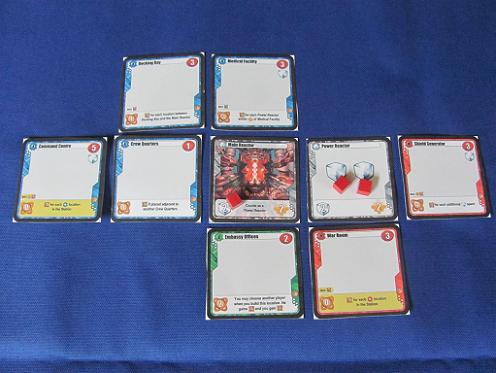
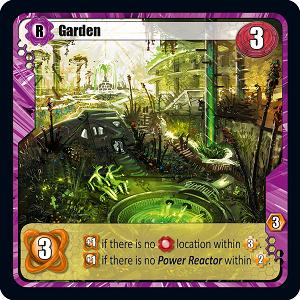
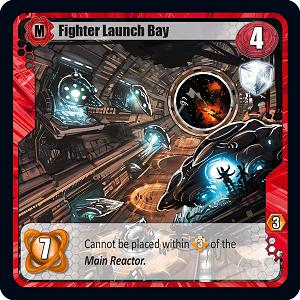
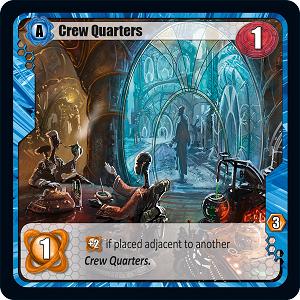
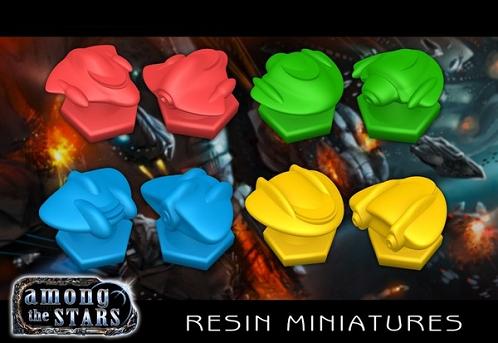




Thank you David for your preview!
Just a note on what you say about the Power Reactors: If you get to play the game more times you ‘ll see that they are in fact very important and making good use of them is key to the victory. There are even some strategies built around them that can be quite successful.
As for the racial ability that you mention, it is true that given to an inexperienced player it will cause some delay but this is due to not knowing what the cards do. Once the players get familiar with the cards, the delay is minimal. (Btw, the mentioned ability can be played any time (turn) during the year – not necessarily at the beginning)